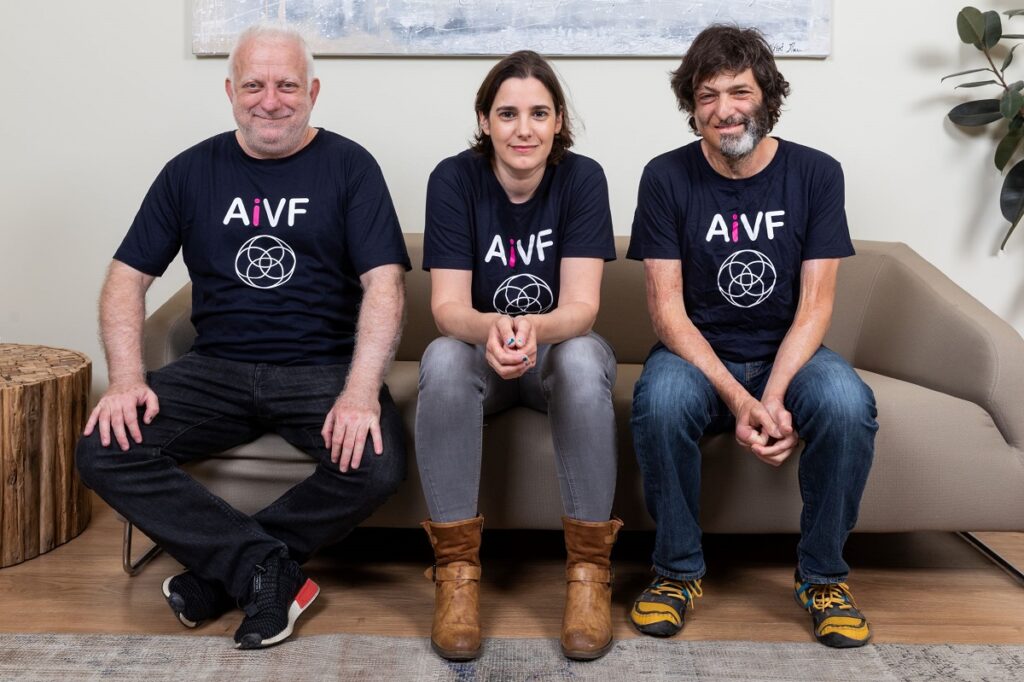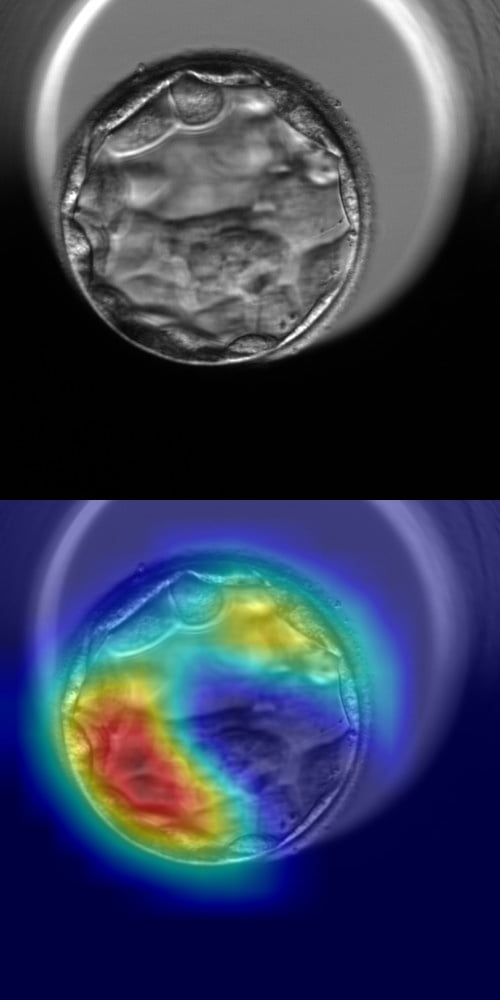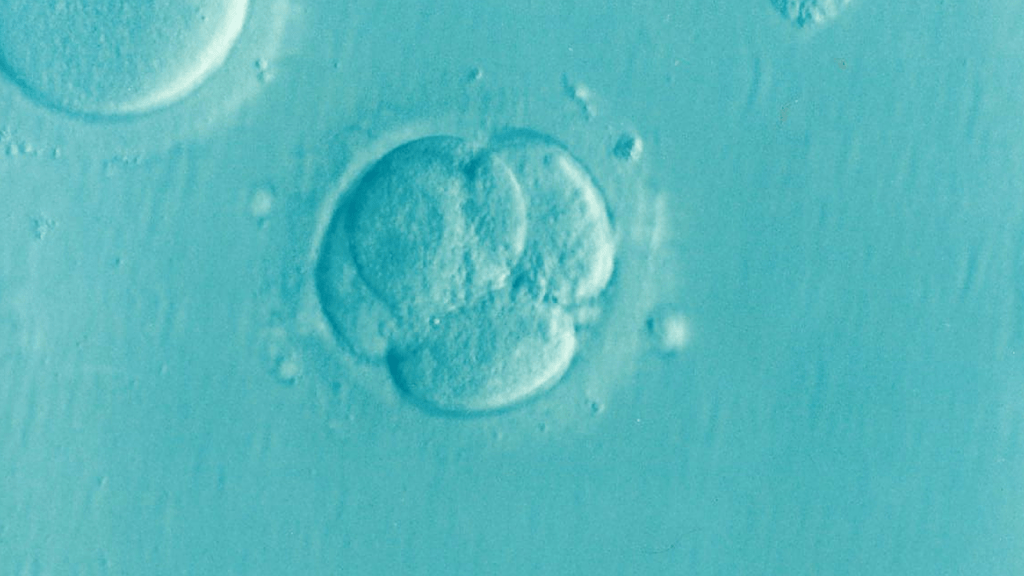Artificial intelligence (AI) has become a significant and reliable tool to provide diagnostic accuracy and analysis in healthcare. It has powered robots to provide assistance in surgery and provided algorithms for radiologists to improve the medical imaging field.
Meanwhile, reproductive technologies have been marked by constant innovations over the past few years, but only recently has AI begun to make an impact on the in vitro fertilization process. AIVF is one of the Israeli startups leading the way with its digitization of IVF clinics. The company just received the CE Mark for the use of its AI-based digital embryology management platform, EMA, in IVF fertility clinics, paving the way for its use across 27 countries in Europe.

“The mission and vision of IVF is really to help people achieve pregnancy and help families through the very tough, complicated, and painful IVF journey,” AIVF CEO and co-founder Daniella Gilboa tells NoCamels. “I think having this kind of technology is the first step for families going through this process to succeed in having a baby in a timely manner. That’s our vision — to help people succeed in IVF and to have people plan their fertility journey fast and accurately.”
Getting European approval (CE mark) is “a real milestone for us,” she adds.
The company is currently conducting clinical studies in Europe and the US, and soon hope to do so in Israel as well. While the clinical studies are ongoing, the next step is to receive approval from the US Food and Drug Administration (FDA) and officially roll out their products this summer.
Founded in 2018, Gilboa says AIVF was established to bring IVF into the digital age while harnessing the most innovative technologies available to revolutionize the field and help take the guesswork out of fertility treatment. The company aims to streamline the IVF embryo selection process by providing clinicians and embryologists with a fully automated AI-based decision support tool, which is designed to minimize human bias, allowing for individualized data-driven decision-making throughout the entire IVF process.
“This is the first step for people to get better IVF treatment based on data, based on database decision-making, based on standardization,” she says. “We believe that this technology would really support the physician and the embryologist in their decision-making. It wouldn’t be the decision-maker, but it would assist in such decisions. You have something that could help you make better decisions based on real-time data so you get better treatment, it’s as easy as that.”
Gilboa calls the IVF process an “underserved market” that is high in demand. “One in eight couples experience infertility in the US and 1.2 million treatments are missing there. The demand is huge and the supply is limited and the suppliers, the IVF labs, can’t meet such demand because they still work like they did 42 years ago.”
SEE ALSO: Baby Tech: 9 Israeli Innovations Reinventing Pregnancy And Infant Care
Meanwhile, some 30 percent of all IVF treatments take place in Europe clinics and clinicians continue to have difficulty meeting the demand.
The AIVF team is made up of experts with decades of hands-on embryology and clinical IVF experience, as well as the world-renowned Prof. Dan Ariely, a global leader in the field of behavioral economics. Ariely was appointed Chief Behavioral Office and is currently helping AIVF develop social and behavioral strategies that shape the next stage of IVF treatments.
Sign up for our free weekly newsletter
Subscribe
Gilboa herself has been working in embryology for more than 15 years — one of the “most noble professions in the world” that can also be difficult, she says.
“I miss working in the lab as an embryologist, meeting patients, talking to patients, and explaining the process to them. But I think part of the problem in IVF today is that the delivery of information is lacking. People or patients don’t understand exactly what they’re going through, because we don’t know how to tell them. As an embryologist I grade embroys, and the way I grade embryos is very subjective,” she explains.
While Gilboa says she can tell her patient that that the embroys are “nice” or “good looking” embroys, it doesn’t say anything about the chances.
“This is the million-dollar question,” she explains. “Some embryos have great potential, some don’t. This is biology. Our mission is to understand which embryo will become a baby and transfer the specific embryo to the womb or freeze it. Clinical embryology has been around for many years and we know a lot but we don’t know enough.”
With AIVF, the chances for a successful pregnancy are higher, requiring fewer rounds.
“What is a good looking embryo for a patient? The patient wants to know what are her chances of getting pregnant. I can’t say that. I don’t know how to calculate the prediction or the chances. I can only say that we look for certain biological parameters, so this specific embryo meets this parameter, and it’s a good looking embryo or a bad looking embryo, but I can’t really explain and provide with detailed explanation of the chances, of what the next step would be, how to help her plan this really roller coaster journey of IVF,” she explains, “It’s not only IVF, it’s family planning. So I think this system is the first step to enable patients receive the information that they deserve to get in 2021 and help physicians and embryologists just make better decisions, and pick IVF.”

In the lab, the AIVF team creates embryos by joining sperm and eggs and then grows those embryos for five days before deciding if the embryo has great potential or might have a genetic abnormality.
“What we’ve realized during this amazing research technology development is that everything — the secret of life is in this five-day-old embryo. Everything is in there, you just have to find it,” Gilboa says. “Using our EMA platform, we were able to detect features that are correlated with genetic abnormalities, features that are correlated with gender. So everything is in there, and it’s only a matter of finding it. So this can be done only by AI and not by human eye.”
“AI can scan or can analyze millions of embryos on the time interval of seconds and a human embryologist can analyze few embryos. The things that AI can detect, is something that the human eye cannot see,” she adds.
Related posts

Israeli Medical Technologies That Could Change The World

Harnessing Our Own Bodies For Side Effect-Free Weight Loss

Missing Protein Could Unlock Treatment For Aggressive Lung Cancer




Facebook comments